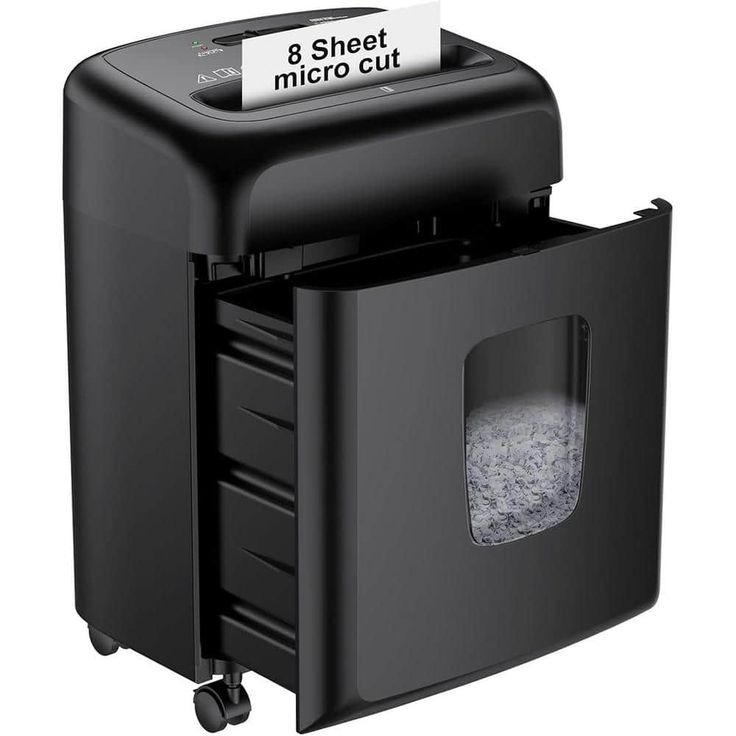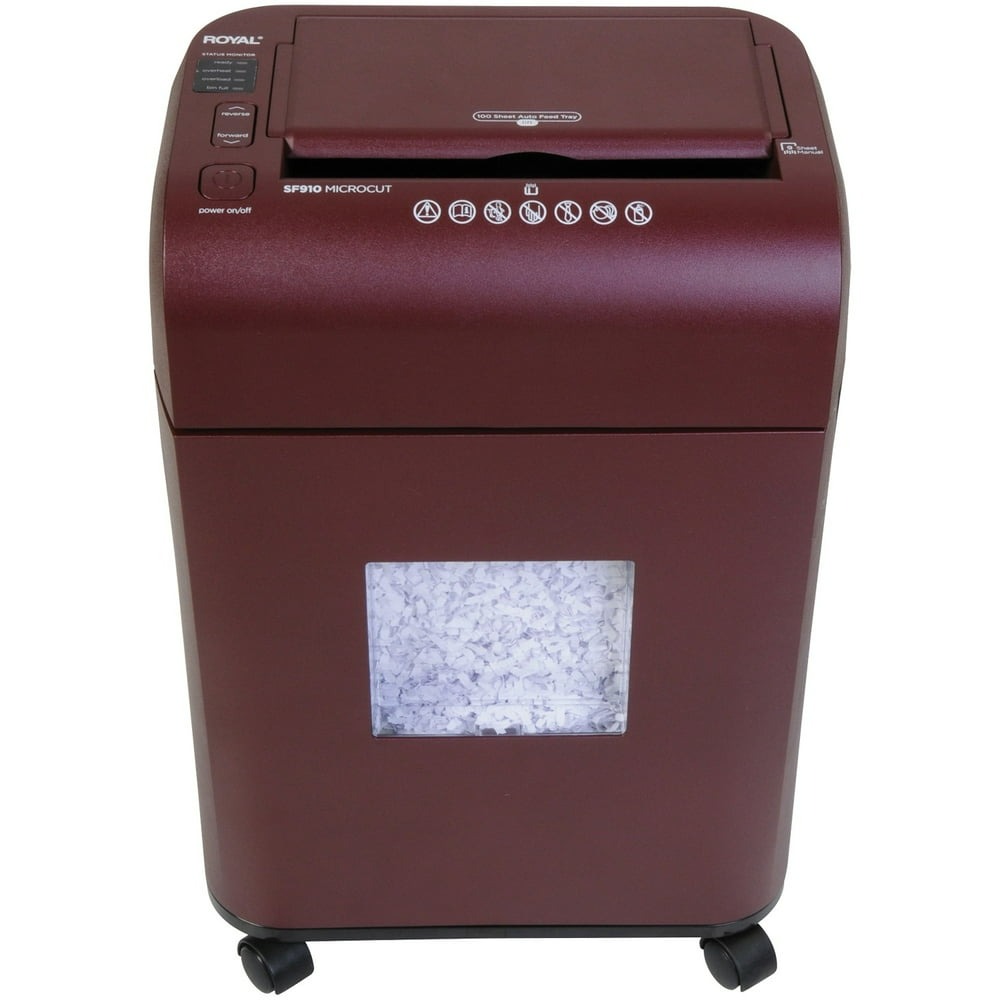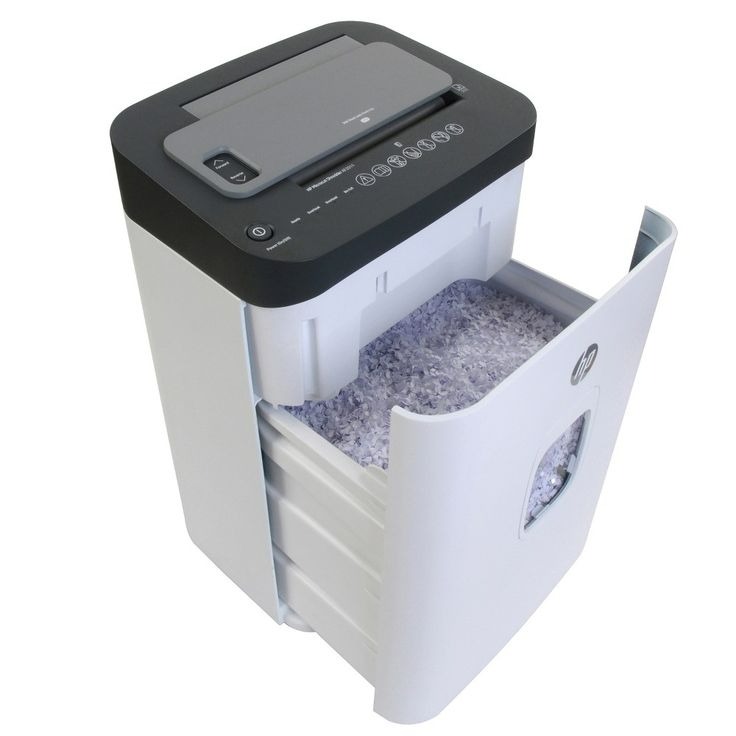Common Causes of Sensor Malfunction
When your paper shredder sensor is not working, it can be due to various reasons. Identifying the root cause is the first step in troubleshooting. Here are some common issues that might cause sensor malfunction in your paper shredder:
- Dust and Debris Accumulation: Over time, dust and shredded paper debris can accumulate on the sensor, blocking its ability to detect paper.
- Misaligned Sensors: Sometimes sensors may shift out of place, affecting their functionality.
- Wear and Tear: Normal wear and tear can affect the sensor. With heavy use, sensors can deteriorate and stop working properly.
- Poor Connectivity: A loose connection or damaged wiring might interrupt the sensor’s operation.
- Electronic Component Failure: Electronic sensors have components that can fail due to power surges, overheating or age.
Understanding these common causes can help you perform the right troubleshooting steps. This ensures your paper shredder functions optimally and the paper shredder sensor not working issue is resolved quickly.

Steps to Safely Inspect the Sensor
Before jumping in to resolve the paper shredder sensor not working issue, you must inspect the sensor safely. Here’s a step-by-step guide:
- Unplug the Shredder: Always start by unplugging the paper shredder from the power source. This is critical for avoiding electrical shocks.
- Remove Shredder Lid/Top: Carefully take off the top of the shredder to access the sensor. Refer to your shredder’s manual for specific instructions.
- Locate the Sensor: Find the sensor which is usually situated near the paper entry slot.
- Visually Inspect for Obvious Issues: Check for any visible signs of obstruction or misalignment that could be causing the sensor to malfunction.
- Check for Loose Wires: Gently examine any wires connected to the sensor to see if they are loose or damaged.
Before touching any internal components, ensure that your hands are dry and you are in a dry environment to prevent any potential shocks. If you’re unsure about any step, consult the manual or seek professional help to avoid causing any damage to the shredder or injuring yourself.
Cleaning the Sensor: A Detailed Guide
Having established common causes for a paper shredder sensor not working, safe inspection procedures, it’s time to discuss cleaning the sensor. Build-up of dust and debris is a frequent culprit behind sensor issues. A clean sensor can prevent malfunctions and extend the shredder’s life.
- Gather Your Cleaning Tools: You will need a can of compressed air, a cotton swab, and isopropyl alcohol.
- Use Compressed Air: Blow away loose debris from the sensor area. Aim the nozzle carefully to avoid pushing debris further into the shredder.
- Apply Isopropyl Alcohol: Moisten the cotton swab with isopropyl alcohol. Gently wipe the sensor to remove sticky residue. Do not soak the sensor.
- Dry the Sensor: Allow the sensor to air dry completely. Ensure there is no moisture before reassembling the shredder.
- Reassemble and Test: Put the shredder back together. Plug it in and run a test sheet to ensure the sensor is working correctly.
Repeat cleaning every few months or when you detect a paper shredder sensor not working. Regular maintenance can keep your shredder working smoothly for years.

Resetting the Shredder: When and How
After cleaning the sensor, you may still find your paper shredder sensor not working. In such cases, a reset can often fix the issue. It’s a simple procedure that can recalibrate the sensor and restore functionality. Here’s when and how to reset your shredder effectively:
- When to Reset: You should consider resetting if the shredder continues to malfunction after cleaning the sensor. Also, if you encounter frequent paper jams or the shredder starts and stops erratically, a reset might be necessary.
- How to Reset: Begin by ensuring the shredder is unplugged. Find the reset button; it’s usually located on the top or back of the unit. If you can’t find it, consult the manual. Press the reset button for a few seconds, then plug the shredder back in and turn it on.
Keep in mind that not all shredders have a physical reset button. For such models, you might need to unplug the unit, wait for a few minutes, and then reconnect it to reset the system. Always check the user manual for model-specific instructions.
Make sure to run a test sheet after resetting to confirm the sensor works properly. If problems persist, it might indicate a more serious issue, and you may need to consider further steps such as sensor replacement or professional assistance.
When to Replace the Sensor: Signs to Watch For
Even after cleaning and resetting, your paper shredder sensor not working can signal it’s time for a replacement. Here are some signs that your sensor might need to be changed.
- Consistent Malfunction: If the sensor repeatedly fails, despite your troubleshooting efforts, consider replacement.
- Error Indicators: Some shredders have lights or alerts for sensor problems. Persistent alerts usually mean replacement is due.
- Age of the Shredder: An old shredder that has seen extensive use may need a new sensor.
- Poor Shredding Performance: If your shredder struggles with paper detection or frequent jams occur, the sensor might be the cause.
- No Response: When inserting paper does not activate the shredder, and other issues have been ruled out, the sensor could be at fault.
When it’s clear a replacement is needed, check your shredder’s manual for guidance. You can often buy the replacement sensor from the shredder’s manufacturer or an authorized dealer.

DIY Sensor Repair Tips
After understanding when to replace the sensor and exploring all troubleshooting options, you may opt for a DIY repair. Here are tips to try if your paper shredder sensor not working requires hands-on attention. Be sure to unplug the shredder before beginning any repair.
- Examine the Sensor: Reinspect the sensor closely. Look for any breaks or cracks that you might have missed during cleaning.
- Align the Sensor: If the sensor seems out of place, carefully adjust it back to its original position. This can often solve issues with misalignment.
- Solder Loose Connections: If you have experience with soldering, you can solder any loose wire connections yourself. Use caution and the proper tools.
- Replace Damaged Wires: If wires are irreparably damaged, they need replacing. Purchase the appropriate wires and install them, ensuring secure connections.
- DIY Sensor Replacement: For experienced DIY enthusiasts, consider purchasing a replacement sensor and following the manual’s guidance to install it.
Be aware that not all paper shredder problems can be solved with DIY repairs. If you’re not confident in your repair skills or the problem persists, it may be best to seek professional help. Regular maintenance, like cleaning and inspection, can prevent many sensor issues from developing in the first place. Use these DIY tips as a part of your regular paper shredder upkeep routine.
Contacting Support: Getting Professional Help
When self-help does not resolve the paper shredder sensor not working issue, it’s time to contact support. Never hesitate to reach out to professionals. They can offer insights that you might not have considered. Here’s how to get the best out of professional support services:
- Consult the User Manual: Check the manual for support contact details. Manuals often list helpline numbers or email addresses.
- Prepare Shredder Details: Note your shredder’s model, brand, and any error messages seen. This information will help the support team.
- Describe the Issue Clearly: Clearly explain the problem and the steps you’ve already taken to solve it.
- Schedule Service or Repair: If advised, schedule a service visit or ship your shredder for repair. Always use a certified service center.
Remember, warranty conditions might cover sensor issues. Check warranty statements in the manual. If the shredder is still within its warranty period, repairs might be free or discounted. Professional help can ensure that your shredder is repaired correctly and prevent further issues.
Maintaining Your Paper Shredder: Best Practices
To avoid the paper shredder sensor not working issue, regular maintenance is key. Here are the best practices to keep your paper shredder in top condition:
- Lubricate the Blades: Apply shredder oil to the blades every month or after heavy use. This keeps them running smoothly.
- Avoid Overloading: Follow the shredder’s capacity recommendations. Overloading can cause jams and sensor issues.
- Empty the Bin Regularly: A full bin can lead to paper jams. Clear it out before it gets too full.
- Use Correct Paper Types: Only shred materials your shredder is designed to handle. Check the manual for guidance.
- Periodic Deep Cleaning: Schedule a thorough clean-up every six months. This includes dusting and wiping down the entire machine.
- Store Properly: Keep the shredder in a dry, dust-free area to prevent sensor damage.
- Check for Wear and Tear: Inspect your shredder for signs of damage regularly. Early detection can prevent bigger problems.
By applying these best practices, you can minimize the chances of dealing with a paper shredder sensor not working. Consistent upkeep ensures that your shredder performs efficiently and lasts longer.